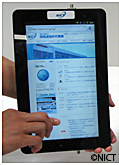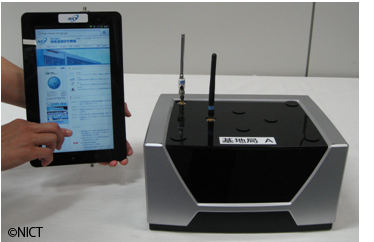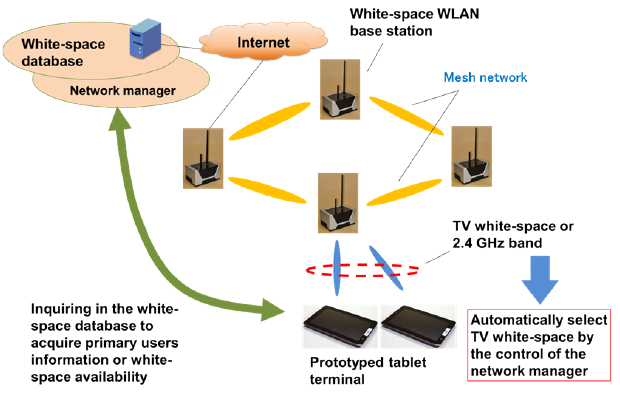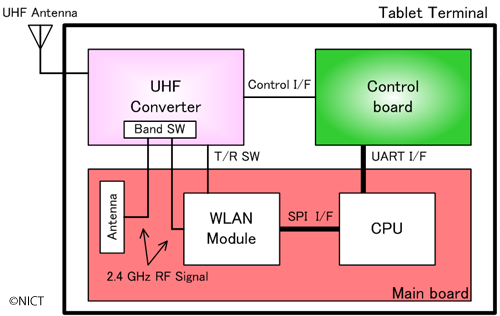Home > Press Release > World’s First Portable Tablet Terminal in TV White-space
- High-speed Communications by Automatic Utilization of Available White-spaces -
The National Institute of Information and Communications Technology (NICT, President: Dr. Masao Sakauchi) has developed the world's first portable-size tablet terminal that enables radio communications in TV bands (470-710 MHz). This tablet terminal utilizes the WLAN systems for the radio communications in TV bands with an inquiry in the white-space database developed by NICT. Original 2.4 GHz band of WLAN system is also available and it is possible that the tablet terminal automatically selects the radio communication band according to the data traffic, etc. by the control of the network manager. The white-space utilization by portable devices achieves not only the fixed point communications but also the mobile communications, and contributes to the further effective use of frequency resource.

Some other functions implemented in this tablet terminal are:
Appendix

Fig. 1 A prototype of the tablet terminal (left) and the white-space WLAN base station (right).
| Item | Specification |
|---|---|
| Display | 10.1 inch 1366 × 768 |
| Cellular | HSPA+/WCDMA/GSM/GPRS/EDGE (mini PCI Express) |
| WiFi | 802.11b/g/n (2.4 GHz) |
| GPS | Built-in standalone receiver |
| Camera | Front 1.3 Mega pixel Rear 3 Mega pixel |
| Power | 5 V, 2A Battery 3.7 V/9000 mAh (Lithium Polymer) |
| OS | Android2.3 |
| Size | 268(L) × 170(W) × 35(H) mm3 |

Glossary
The white-space database developed by NICT was press released as below. (6/7/2012)
URL : https://www.nict.go.jp/en/press/2012/06/07en-1.html
The white-space WLAN base station was press-released as below. (10/17/2012)
URL : https://www.nict.go.jp/en/press/2012/10/17-1.html
Technical Contact
Hiroshi Harada, Kentaro Ishizu and Takeshi Matsumura
Smart Wireless Laboratory
Wireless Network Research Institute
Tel: +81-46-847-5076
E-mail: 


































Media Contact
Sachiko Hirota
Public Relations Department
Tel: +81-42-327-6923
E-mail: 



























